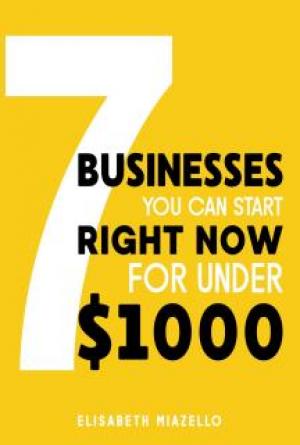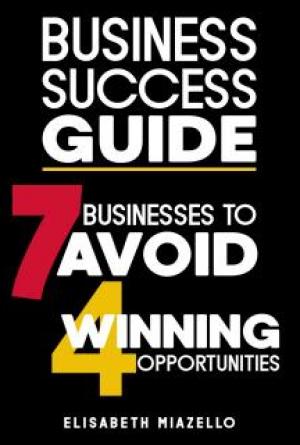
Chapter 3:
How Do You Build a Personal Brand?

Now that you know why you should build a personal brand, let’s talk about how to actually do it. Let’s break down the individual strategies you can use to build your own incredibly powerful personal brand.
Step #1:
Determine Who You Really Are
The first step in creating a powerful personal brand is to determine who you are as a brand. Remember, building your personal brand is about sharing your authentic self with the world.
Tyler Basu puts it like this:
Your personal brand should not be an inauthentic persona. Branding is not about positioning yourself as something that you are not. It’s about purposefully and strategically showcasing your authentic self to your audience and your customers. Your personal brand should be a true reflection of your skills, passions, values, and beliefs.
Before you begin, you have to know some basic things about yourself.
Ask yourself:
● What unique skills do I have?
● What are my core values?
● What am I most passionate about?
● What unique experiences have shaped who I am?
● How can I most effectively serve my core audience?
● What do I have to offer that no one else does?
The answers to these questions will help you understand who you are and help shape your personal brand. You have to get to the core of what matters most to you before you can add value to your audience.

Step #2:
Determine What You Want
to Accomplish
Once you’ve identified the core of who you are, it’s time to think about what you want to accomplish with your personal brand.
Answer these questions:
● What would I like to accomplish, both personally and professionally?
● What do I want to be known for?
● If I could be the world’s foremost expert on a topic, what would it be?
● What key message do I want to communicate?
● If I could only give one piece of advice, what would it be?
The answers to these questions should further solidify in your mind what your personal brand will look like.

Step #3:
Identify Your Target Audience
The simple reality is that you can’t effectively serve everyone. Rather, there is a core demographic of people who will resonate deeply with you, your brand, and what you offer.
This core demographic is your target audience. It’s these people whom you will serve most effectively and who will be your ideal client.
To identify your core audience, ask yourself what problem are you solving and for whom.
Kyle Gray says this about finding your ideal audience:
“The foundation of a strong personal brand is how well you understand your audience and the problems they face. Then you can define why you care and how you solve those problems, which is what you’ll be remembered for.”

Step #4:
Determine Your Unique
Service Proposition
Now it’s time to identify what value you offer to your industry and your clients by developing your Unique Service Proposition (USP).
Your USP is simply your brand summed up into a single, powerful compelling statement that describes exactly what you do for your audience. This compelling statement is your brand statement. Your brand statement summarizes who you are and how you serve your core audience.
For example, your USP may be something like, “I help working moms stay on top of everything and live a fulfilled life.”
Your USP doesn’t have to say everything about your brand, but it should get right to the heart of who you are and how you help your audience.
It simply needs to be short, memorable, and describe what you do.
Avoid skimping on this step. Creating your USP gives you a high degree of clarity about what your brand is all about.
So take the necessary time to craft a USP that adequately captures your brand in a concise sentence.

Step #5:
Start Treating Yourself as a Brand
Once you’ve identified the core values of your brand, as well as your target audience, it’s time to start treating yourself as a brand.
What does this look like practically?
In every communication with your audience, whether a blog post, email, podcast, social media post, etc., you stay true to your brand message.
You constantly speak about the problems you solve, religiously encourage your audience, consistently voice the message of your brand.
Just like Nike wouldn’t suddenly start talking about camping, so you must not go off brand with your communications. You constantly reinforce your USP in everything you do.
It also means creating a strong, compelling website to serve as your home base for all your online activities. Websites allow your audience to have a place to learn more about who you are and what services you provide.
You have to treat yourself like you truly are: a powerful brand that has a powerful message to share with the world.

Step #6:
Optimize Your Website
Now it’s time to get into the nitty-gritty of optimizing your online presence so that it matches your brand. You’re going to start with your website, since this functions as your “home base” of sorts. In other words, your website is one of the primary places people get to know who you are and what you do.
Your website also functions as one of the ways you turn visitors into paying clients. Your website is where clients book appointments, consume your blog, and pay for services.
First impressions are really important when it comes to your website. Visitors should be able to immediately determine how you can help solve their problems. If they can’t, there’s a good chance they’ll leave your website without taking any action.
Don’t have a website? Visit my digital store (dadigitaldiva.com)to purchase a WordPress or basic website builder to launch your website.

Step #7:
Develop Your Content Strategy
The primary way to build your brand is by strategically creating content. By content, I mean blog posts, videos, social media posts, emails, affirmations, podcasts, and more.
Every piece of content you share with your audience should serve to build your brand. As I mentioned before, once you’ve determined who you are as a brand, it’s important to start treating yourself as a brand.
Developing a strategic content strategy is one of the most effective ways to ensure that you’re constantly staying on brand.
When it comes to your content strategy, I like the “Pillar Method” (a term coined by Gary Vaynerchuk).
The Pillar Method works as follows:
● At set intervals (every day, every week, etc.) create a long piece of “pillar” content. This could be a blog post, video, eBook, etc. The point is that it needs to be long enough to be repurposed in numerous ways.
● Any content you produce, should always reinforce some aspect of your brand. Maybe one day you speak to a particular pain point. Another day you encourage your audience to strive for their goals. Whatever the case, it’s essential that your pillar content always ties back to your brand and the solution you provide for the people you serve.
● Take your pillar content and cut it up into smaller, shareable pieces of content like infographics, social media posts, videos, or a blog post.
● Share the smaller pieces of content across all your channels.
The main point is that everything you send out should be brand related. This is the only way to reinforce what your brand represents to your audience.

Step #8:
Constantly Add Value to Your Audience
When it comes to building your brand, it’s essential that you constantly give value to your audience without asking for anything in return. Sort of like me providing you with this free eBook and masterclass to help you build your personal brand. Yes, there will be times when you invite people to buy from you or become a client, but you don’t want that to be the only message you communicate through your business.
The one thing people should take away when interacting with your brand is how much value you provide.
The way you provide value is through your content. This is why it’s so critical to have a strategy that allows you to constantly put out new content.
If you’re not putting out new content, you’re not giving away value.
Mark Lack puts it this way:
“A strong personal brand is one that has a high level of impact, which then leads to influence amongst the people who follow you. The key is to leverage social media and other social platforms and environments to create relevant and meaningful dialogues between you and the people you want to impact.”

Step #9:
Build A Community
One of the best ways to build your brand is to build a community where you and the members can all help each other. The value in building a community around your brand is that it gets others involved in helping to promote your brand.
So how can you build a community?
Some simple ways to build a community include, but are not limited to:
● Start a private Facebook group.
● Host events.
● Create a membership site.
Communities offer you a forum for your members to get to know you better through ongoing engagement with you. Once you have a community, you can regularly deliver value to a captive audience that is familiar with who you are, what your brand represents, and what you sell.

Now Is the Time to Build Your Brand
The simple truth is, you have a personal brand, whether you want to or not. Every single thing you share with your audience either adds to or takes away from your personal brand. You absolutely must be intentional about building your brand.
As Kathy Klotz-Guest says,
“We all have a personal brand whether we think about it that way or not. So, let’s be intentional about it.”
Thankfully, it’s not particularly difficult to build a personal brand in today’s world.
Here’s a quick summary of what we covered in this eBook:
● Identify what matters to you.
● Define your core audience.
● Determine your Unique Service Proposition.
● Treat yourself like a brand.
● Create your compelling website.
● Develop your content strategy.
● Consistently create valuable content.
● Constantly bring your best self to your audience.
● Build your community.
The more you do those things, the more you’ll build your brand and the more you’ll attract an audience of raving fans.
DON’T FORGET TO WATCH THE FREE
PHENOMENAL BOSS
MASTERCLASS
How To Create A Phenomenal Brand.
https://marketinggemsolutions.com/phenomenal-boss-class


















